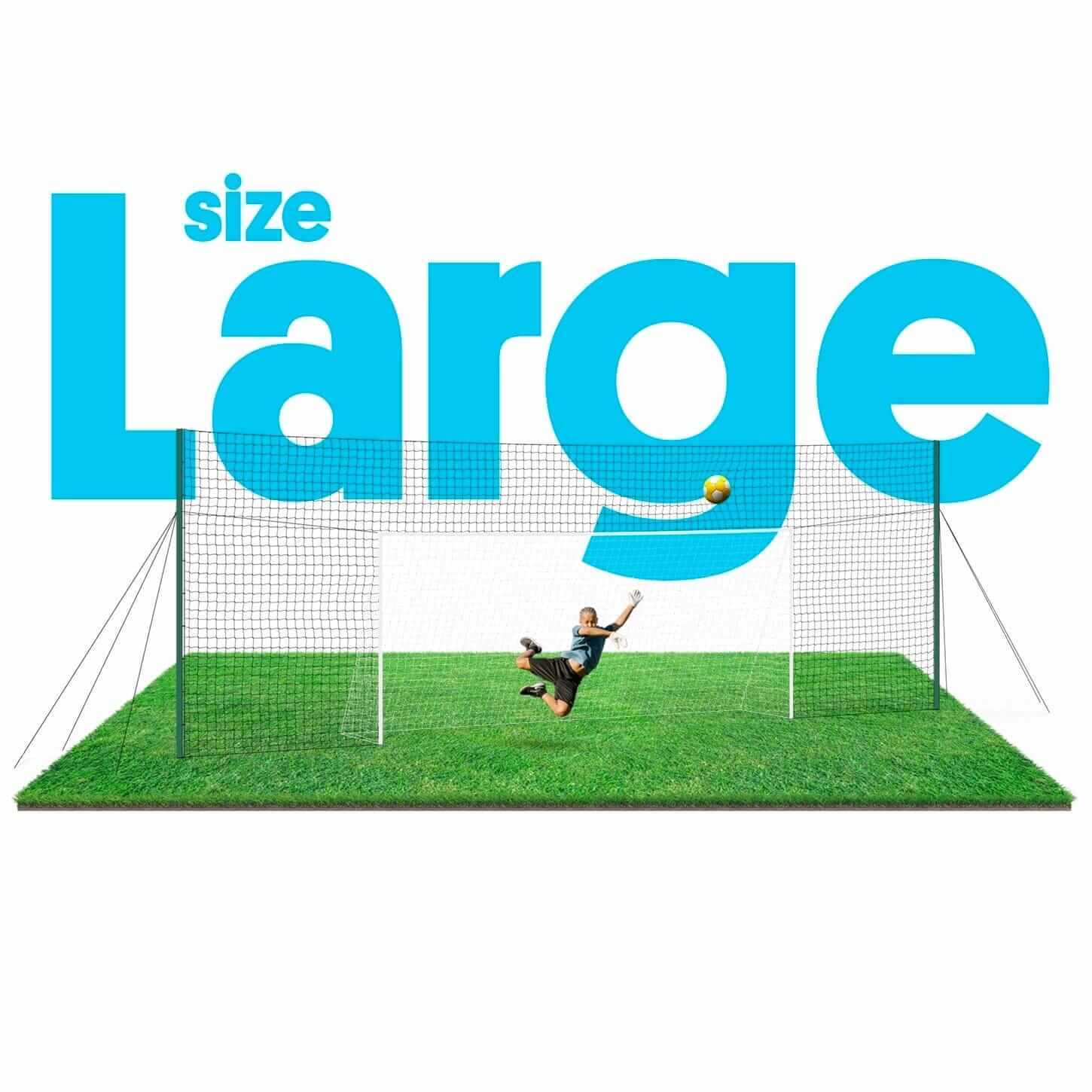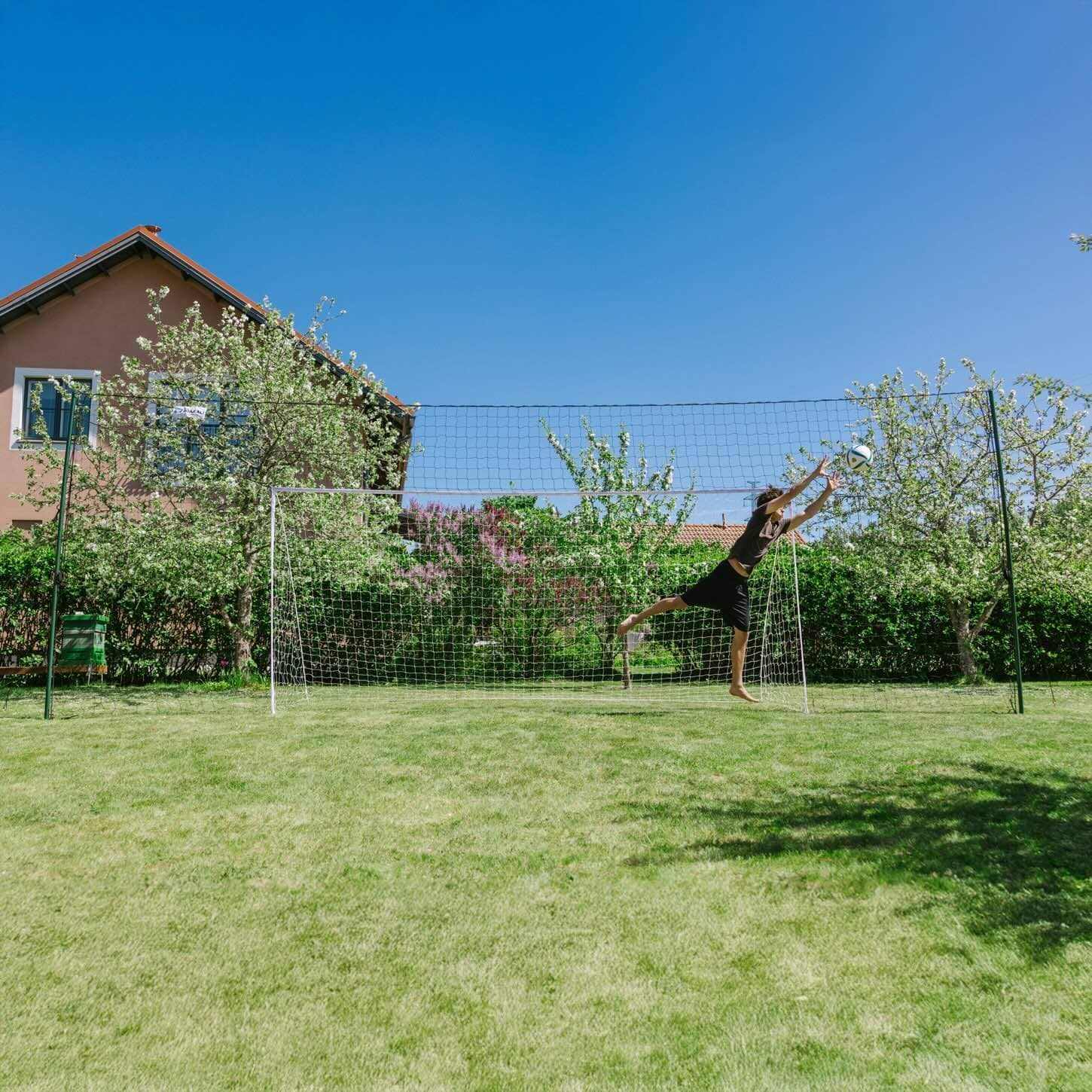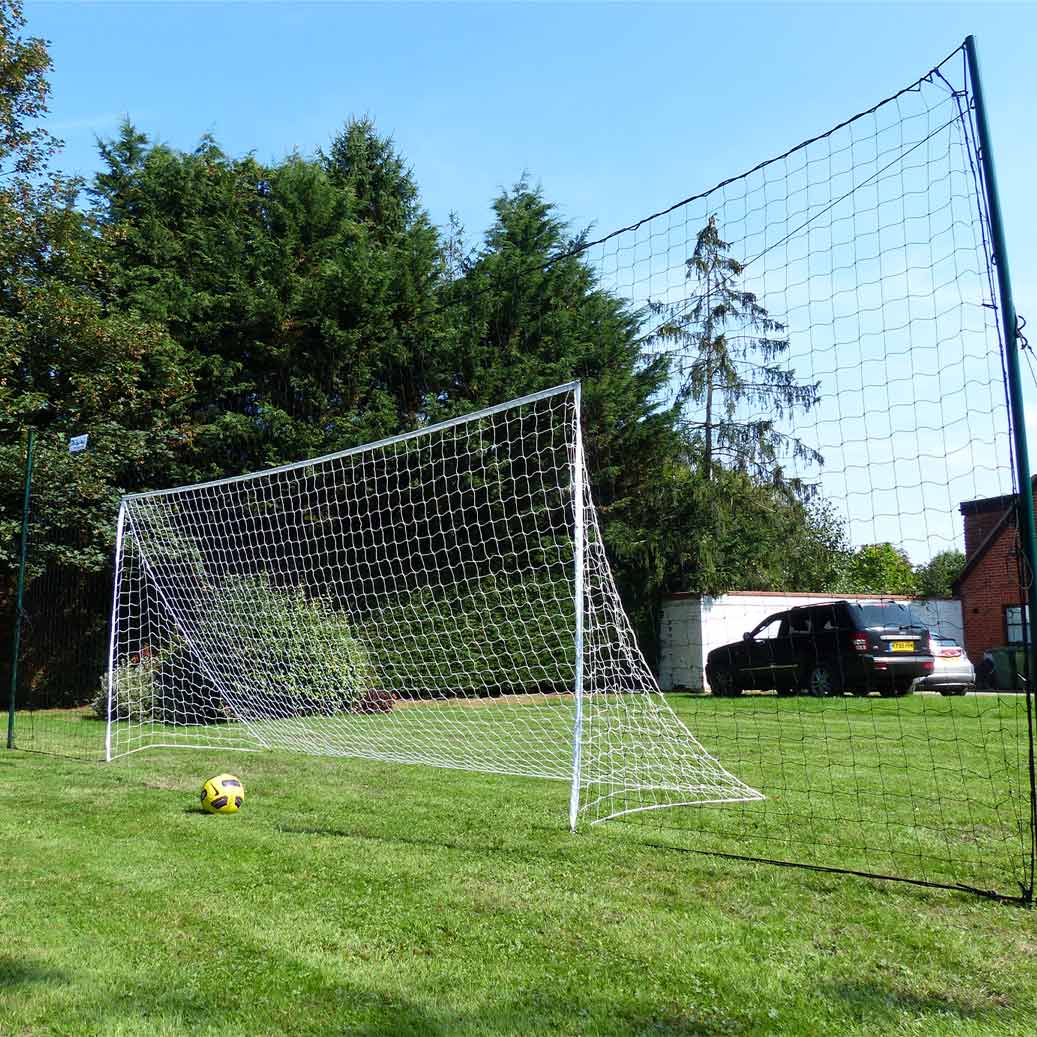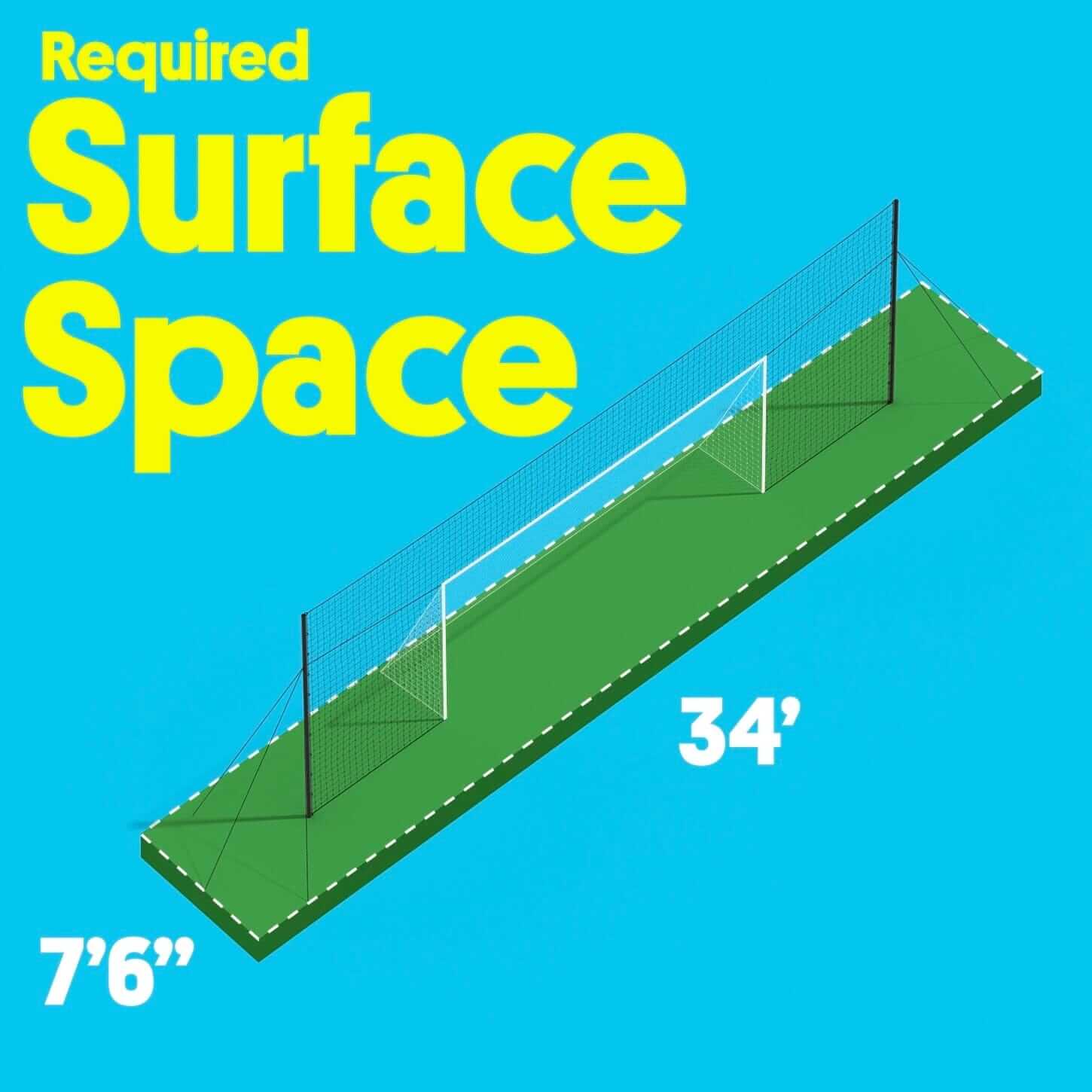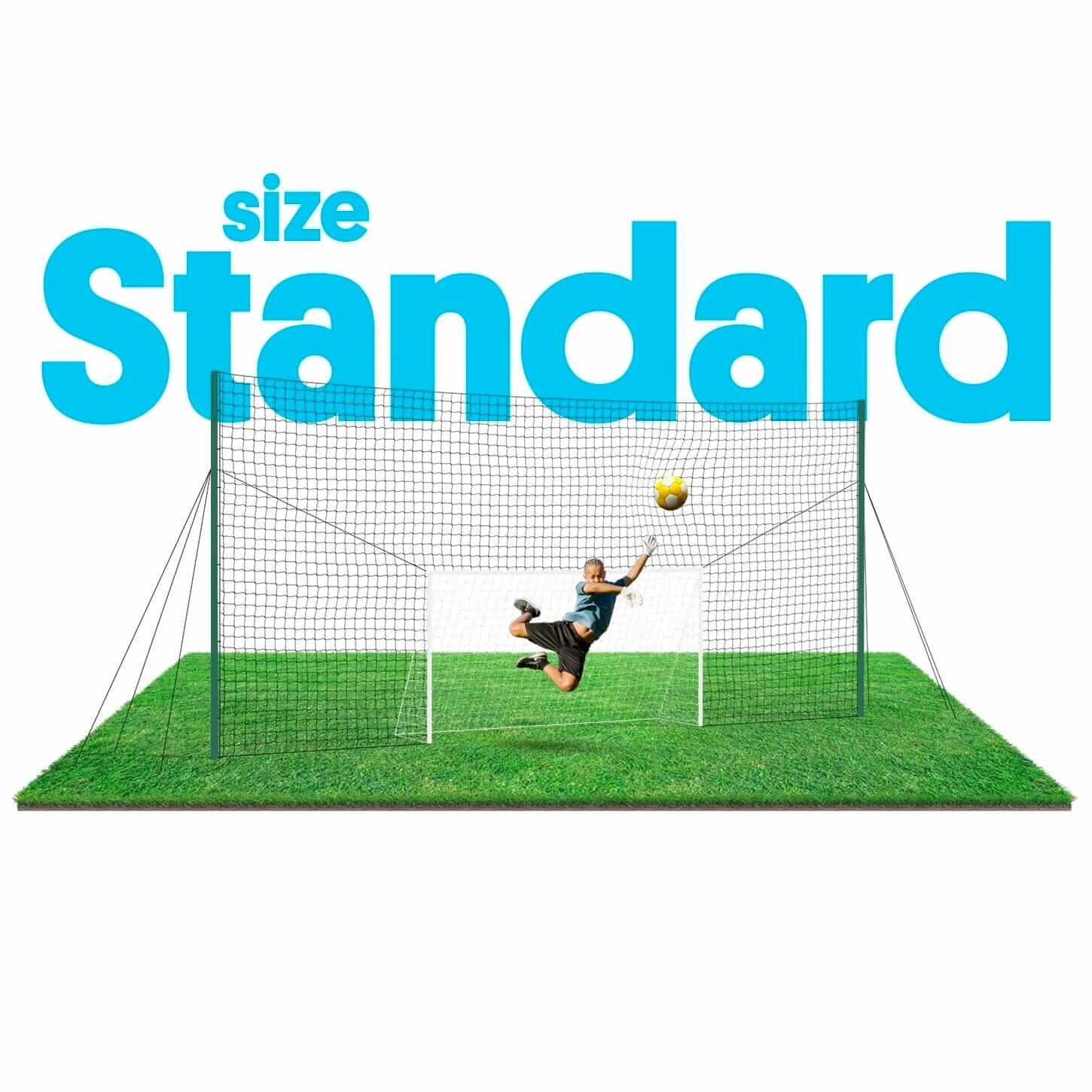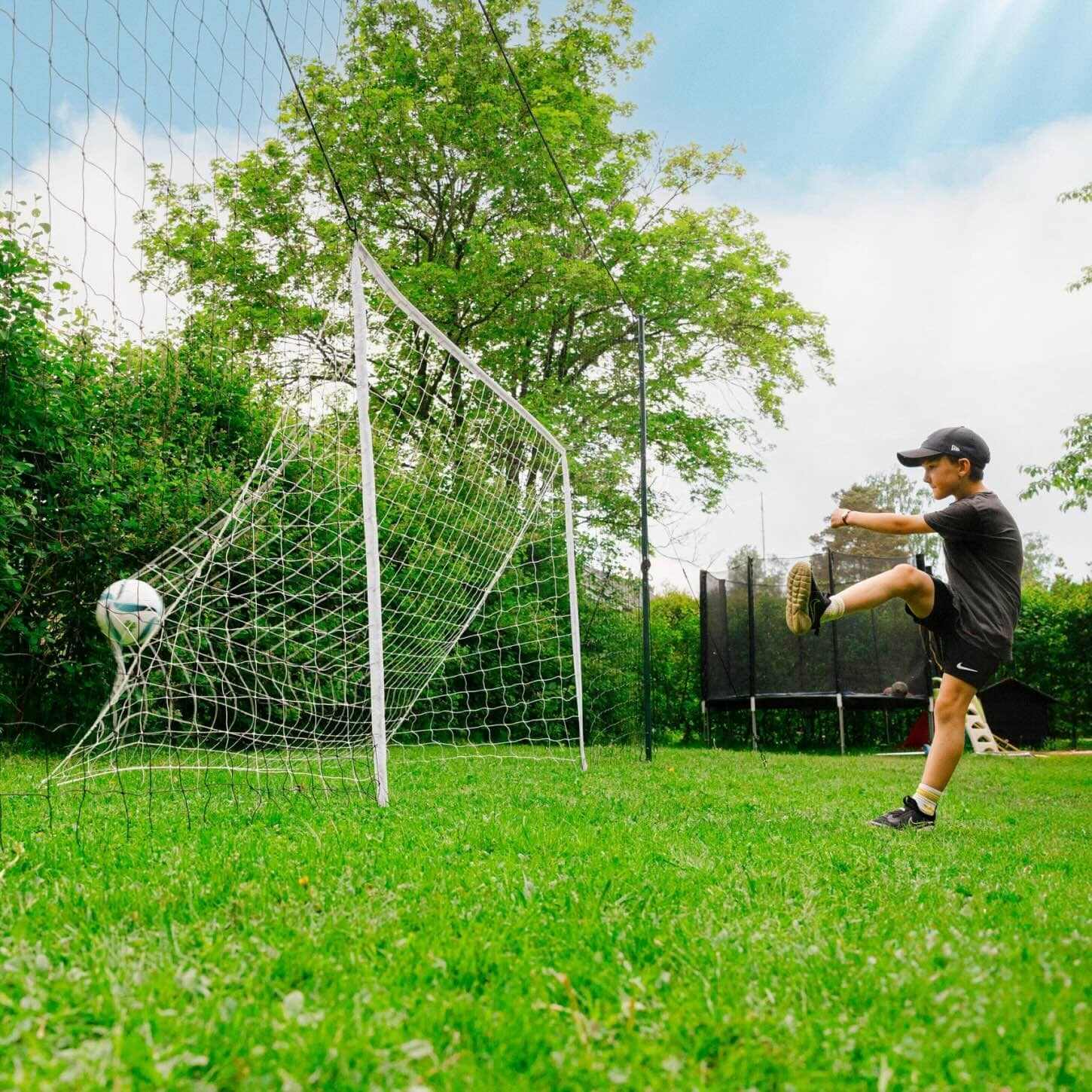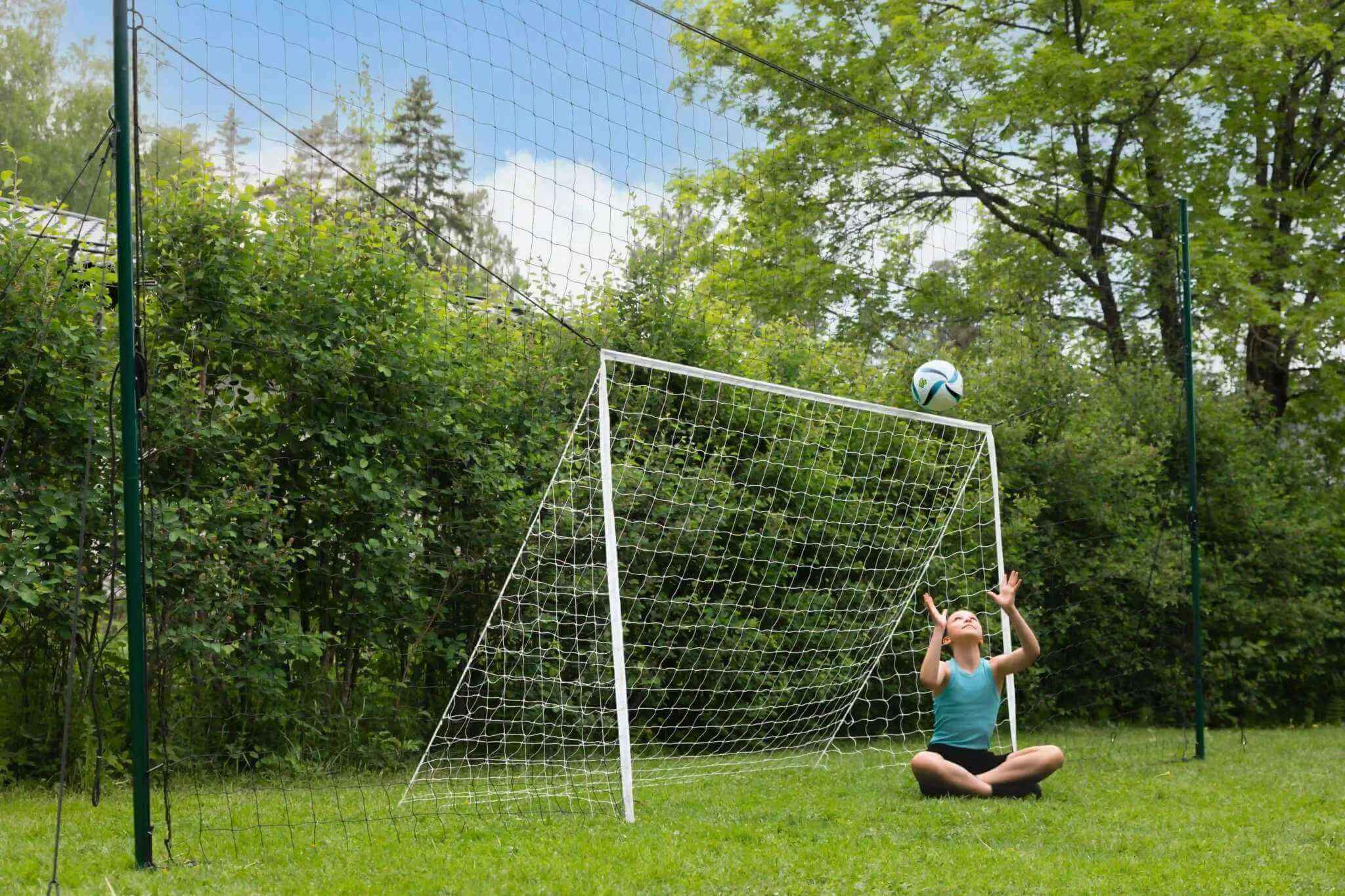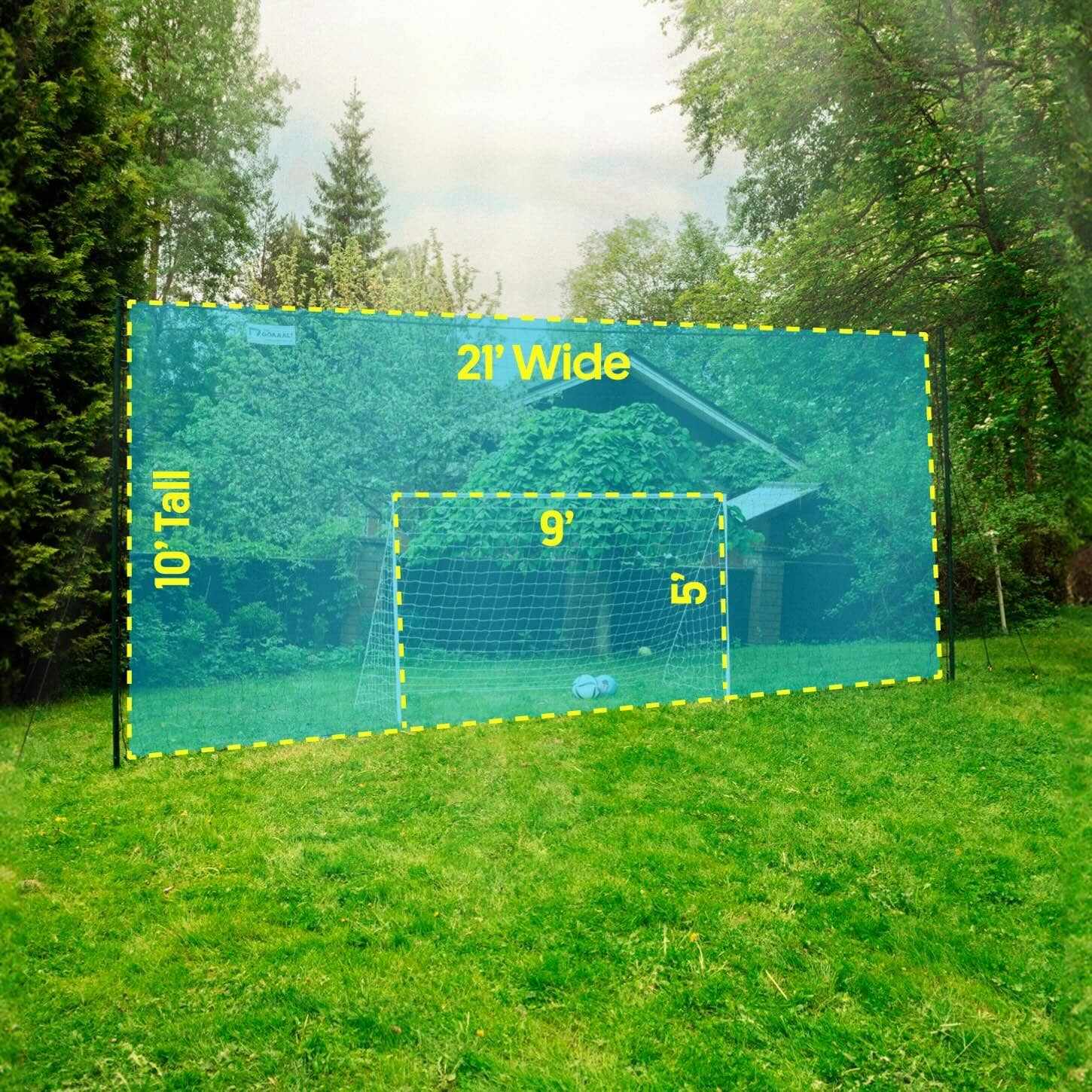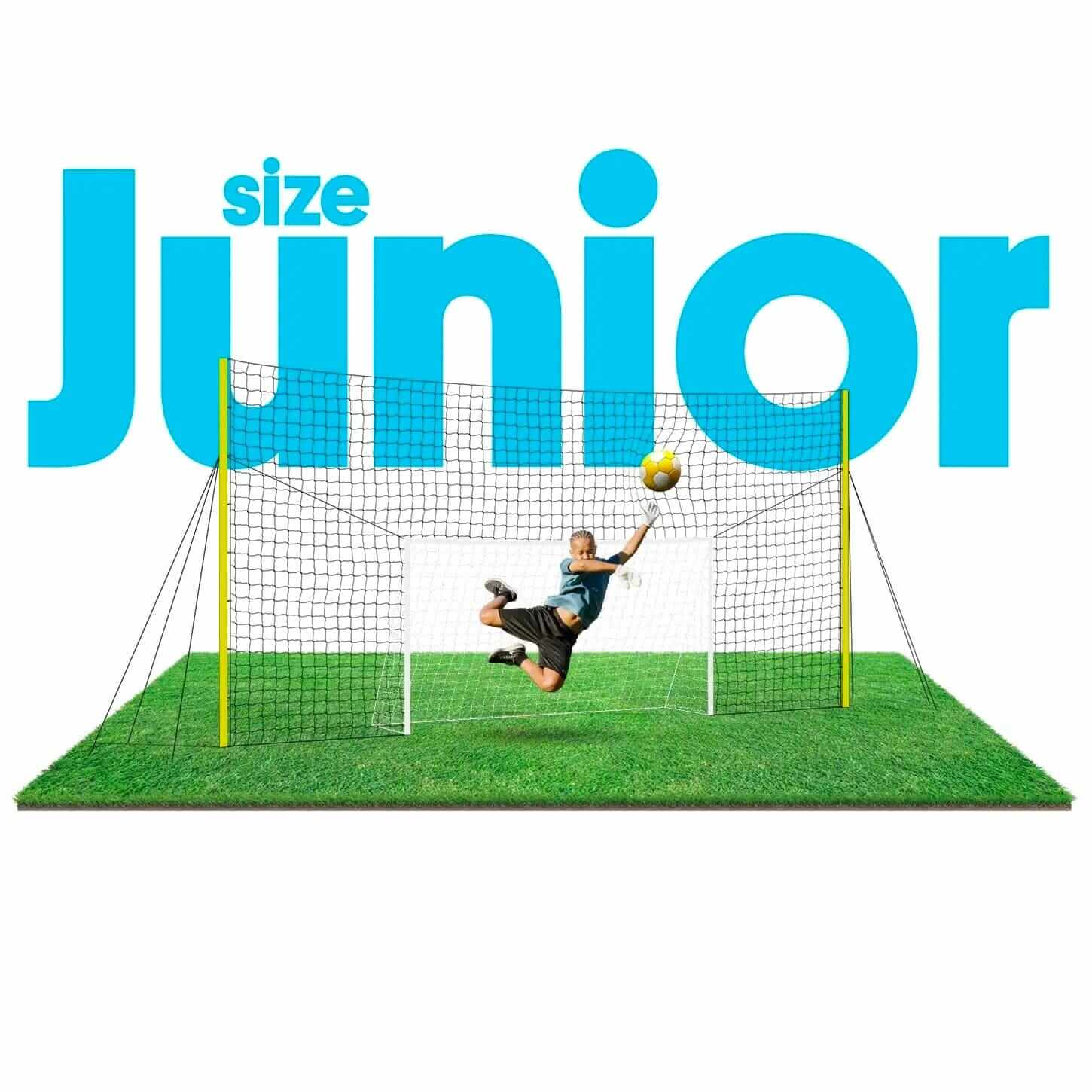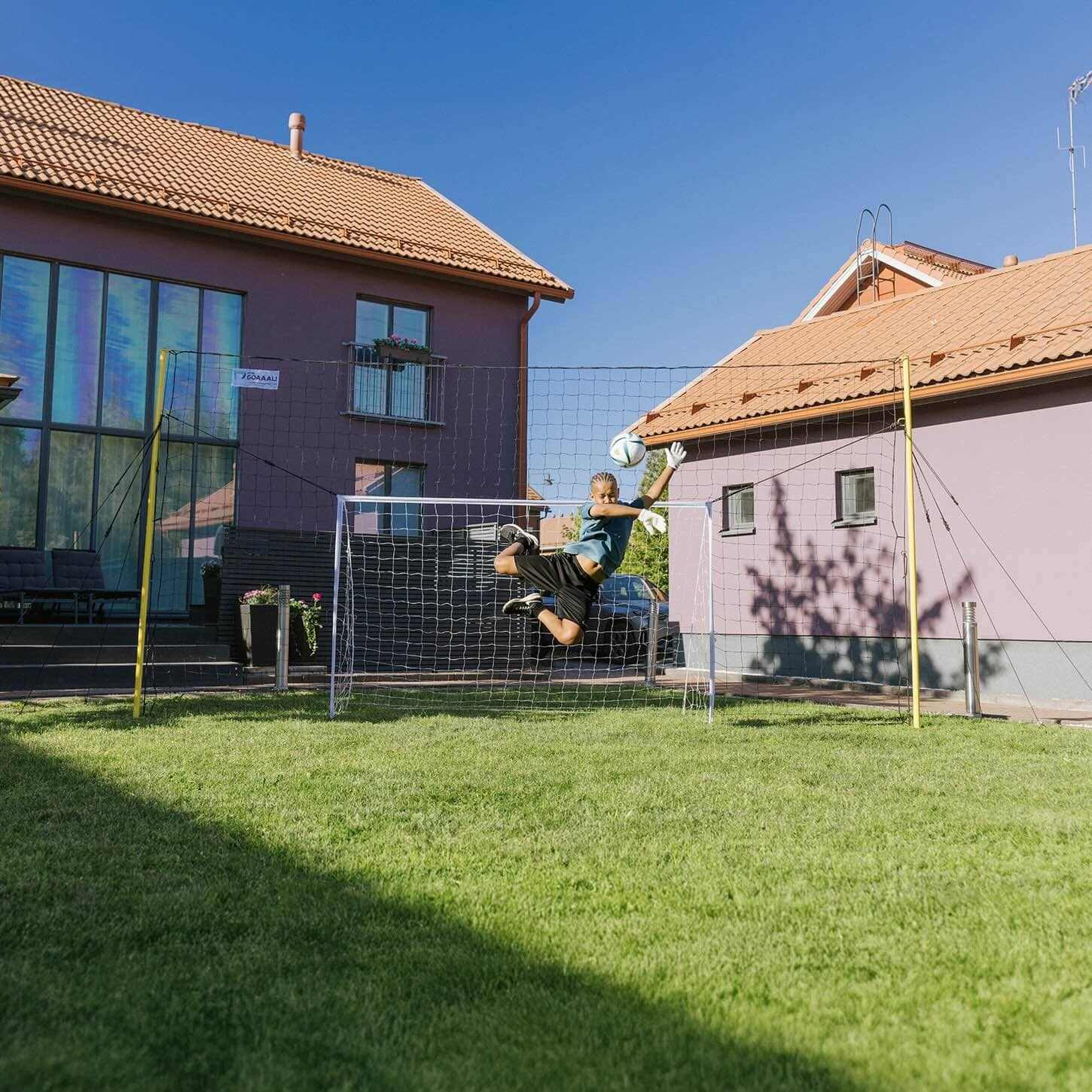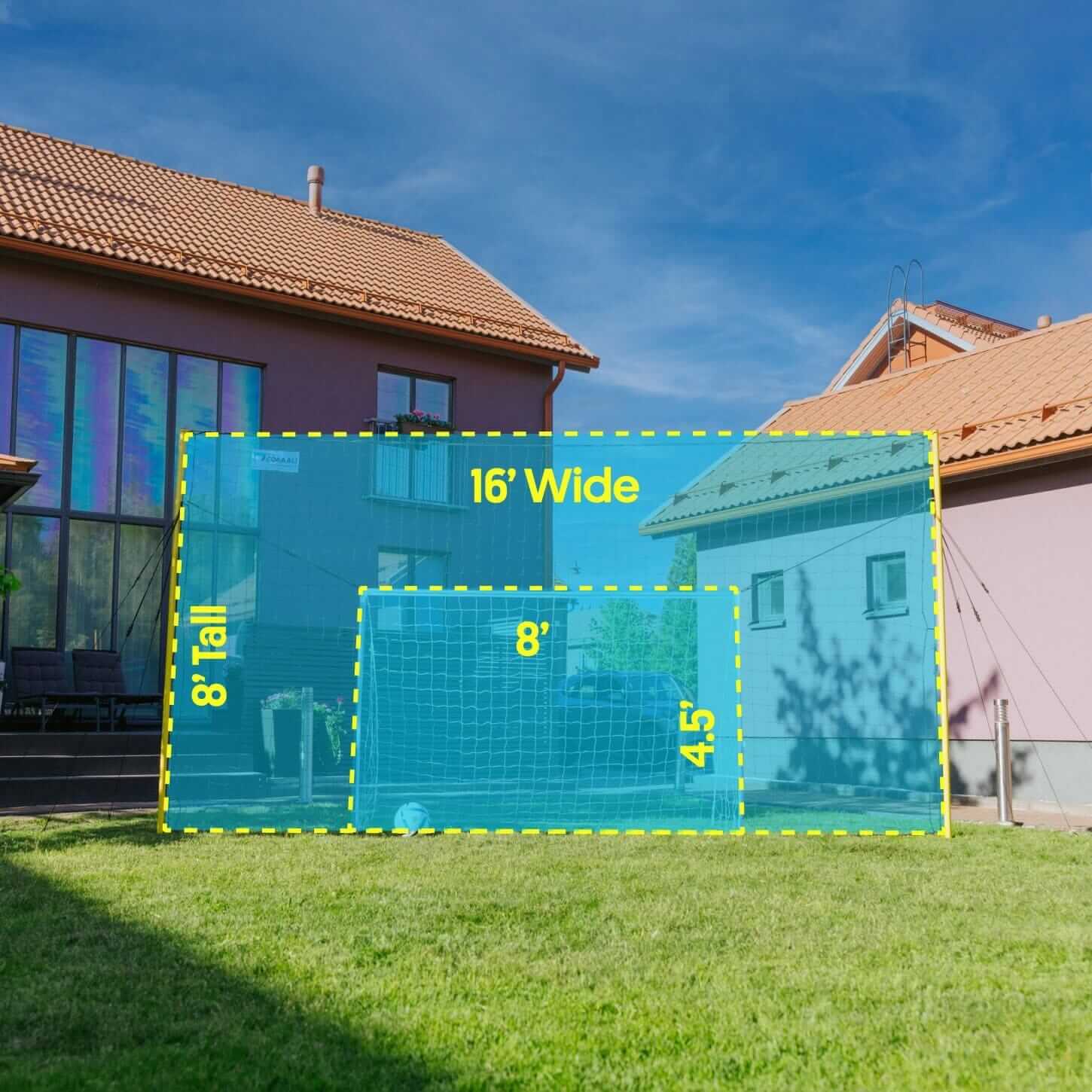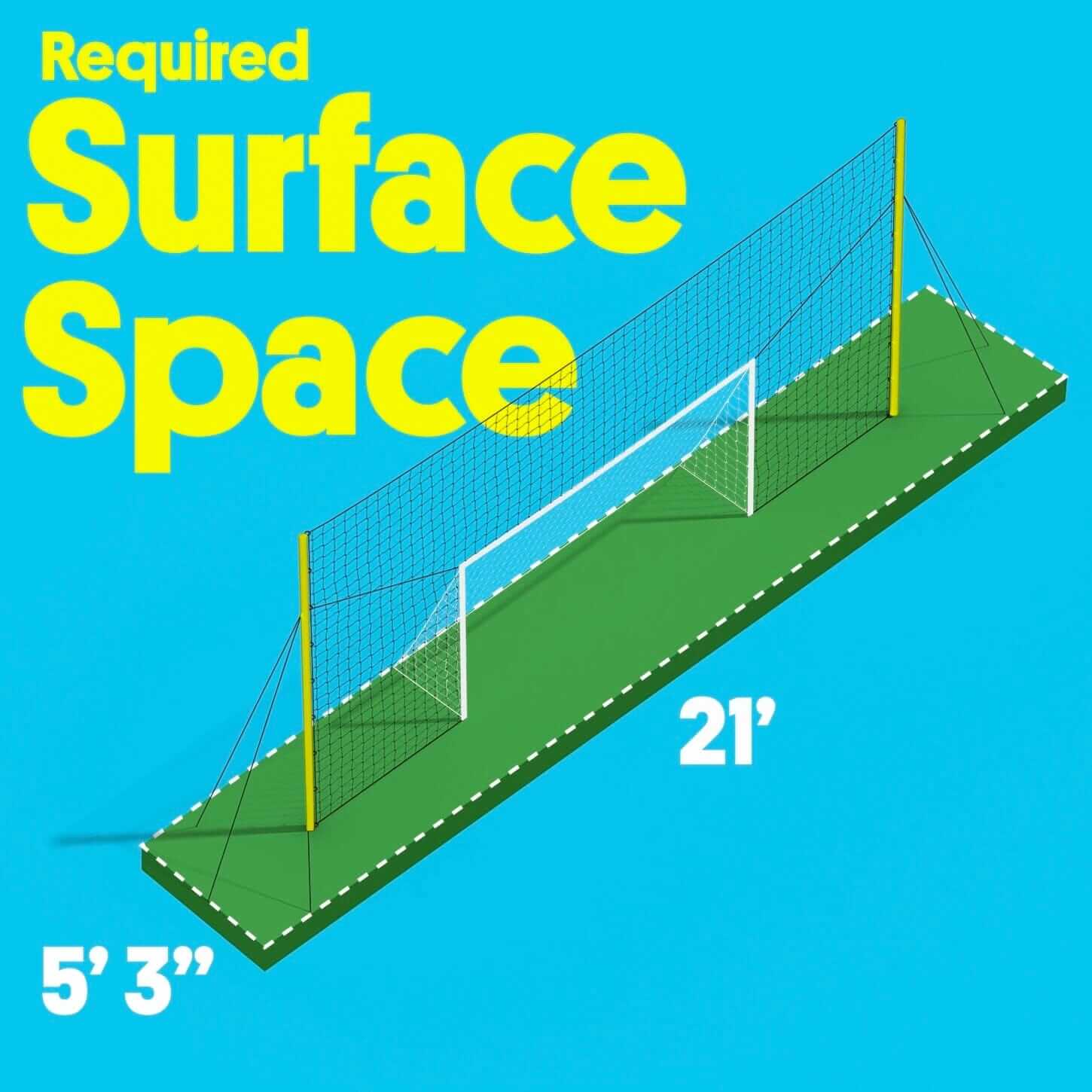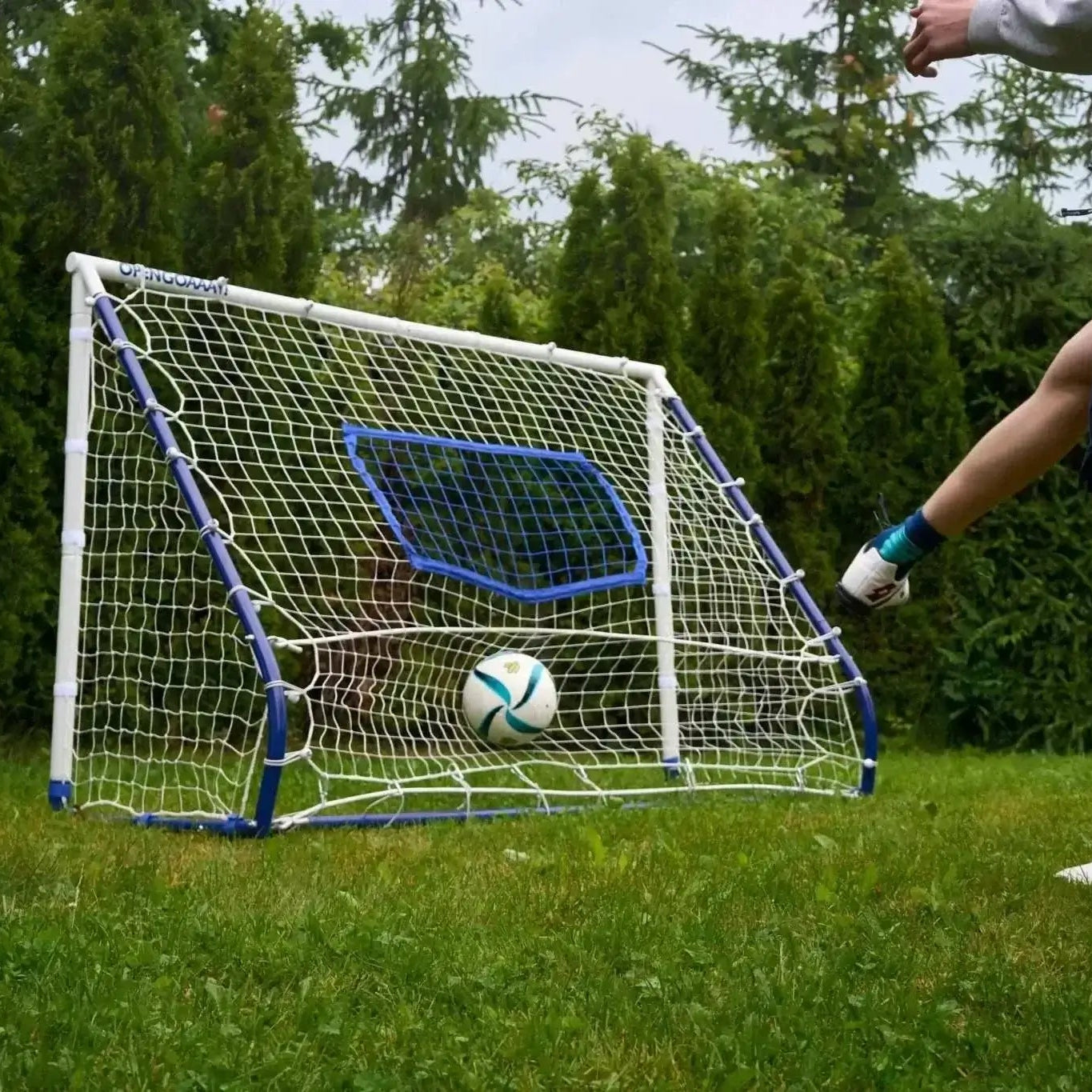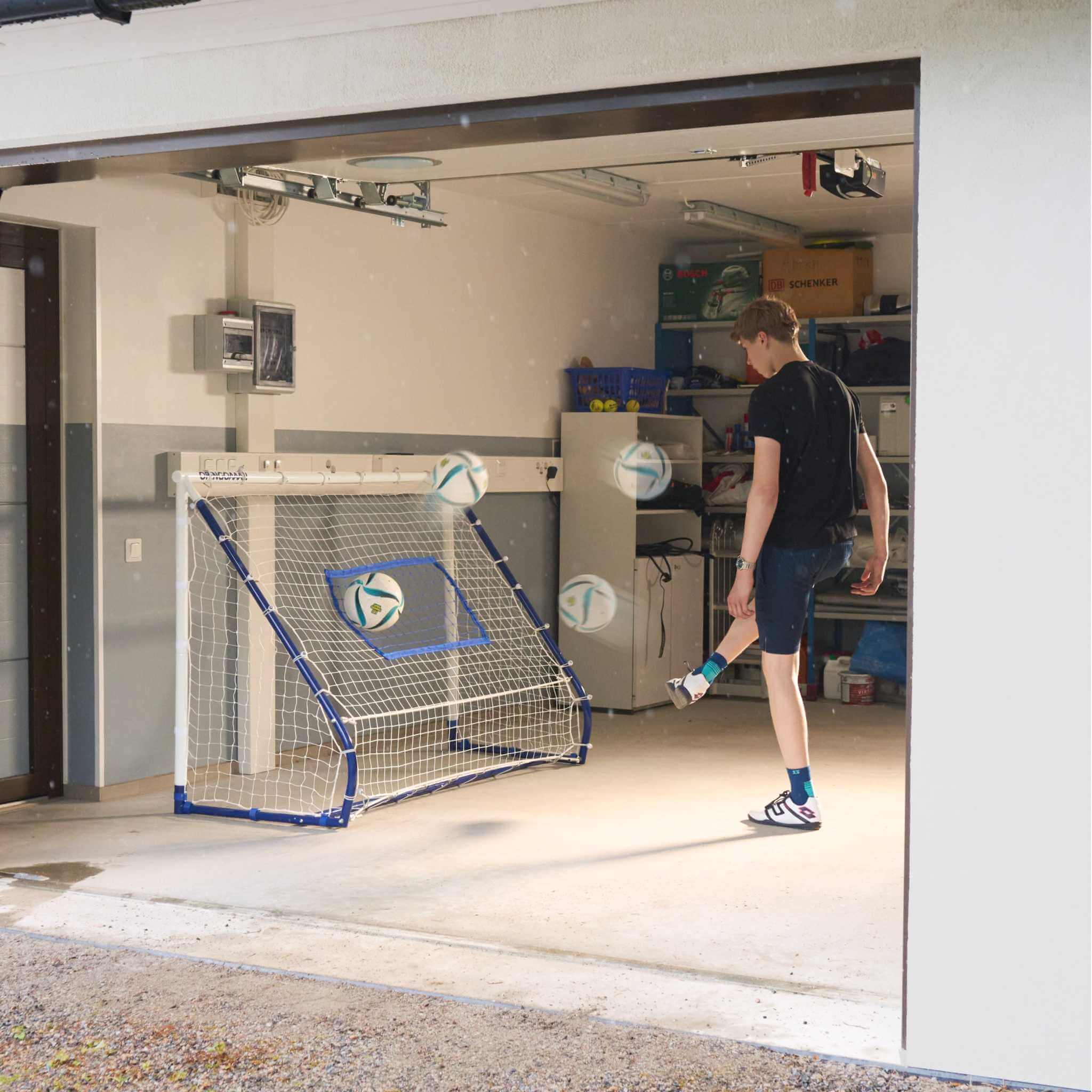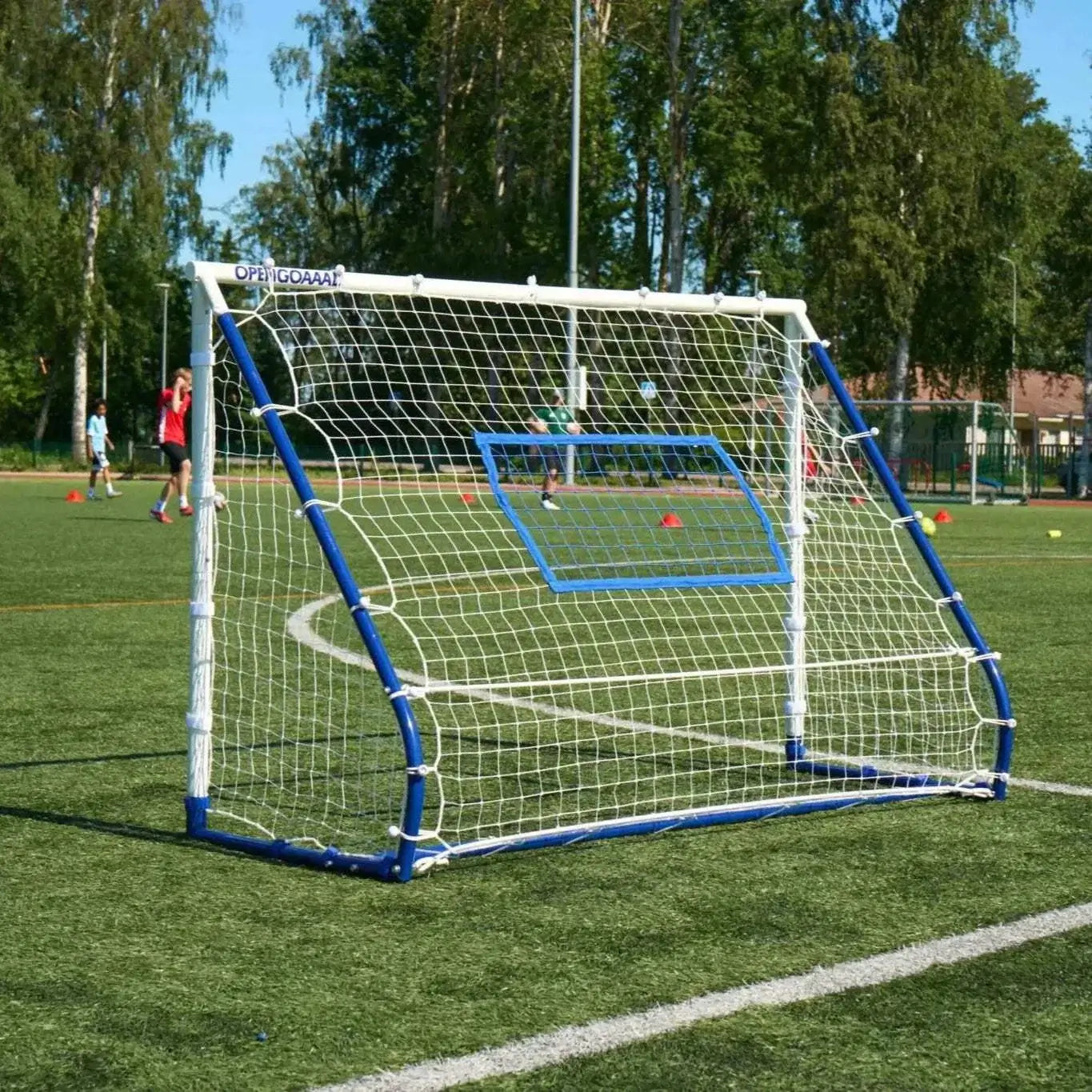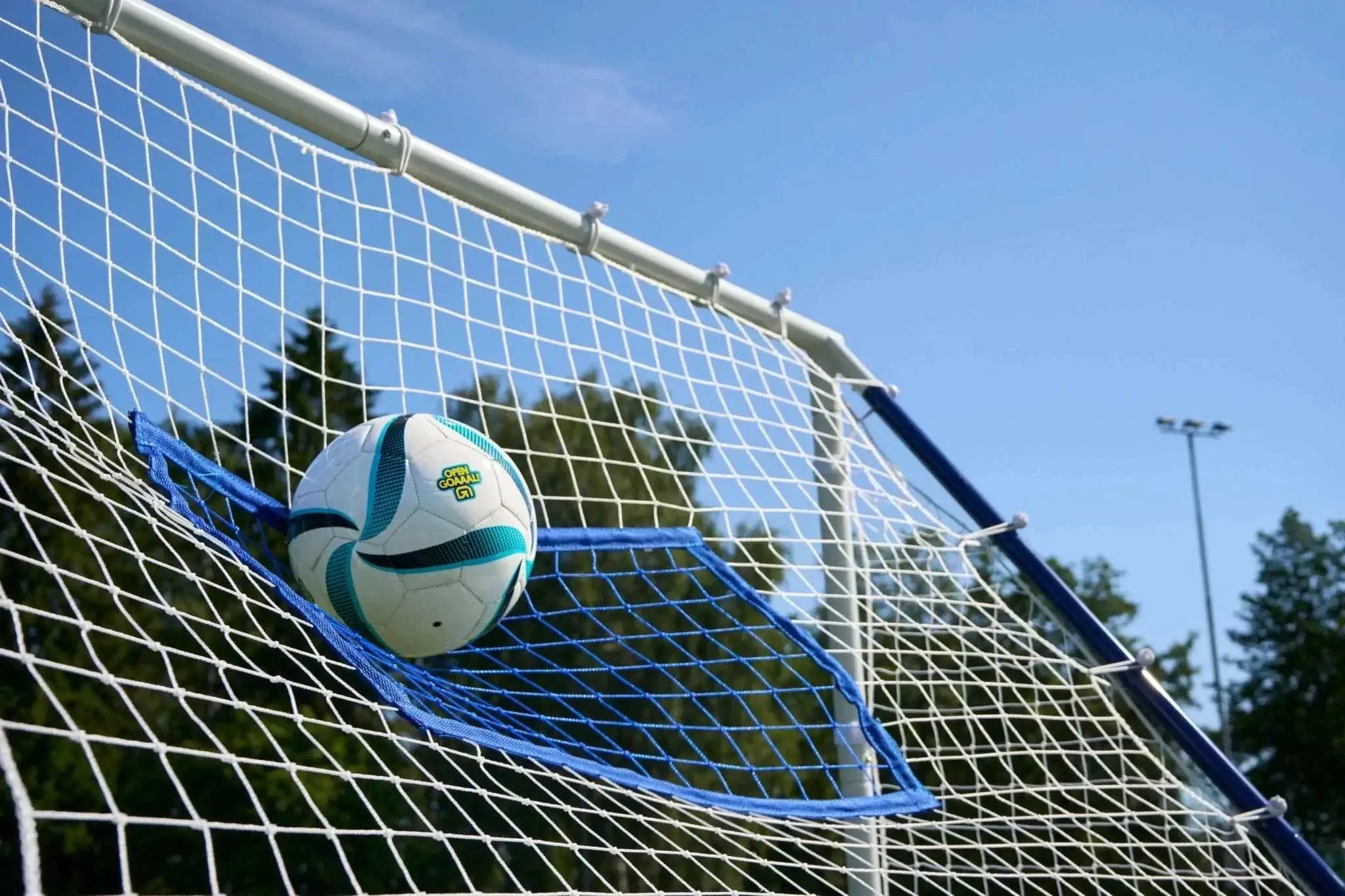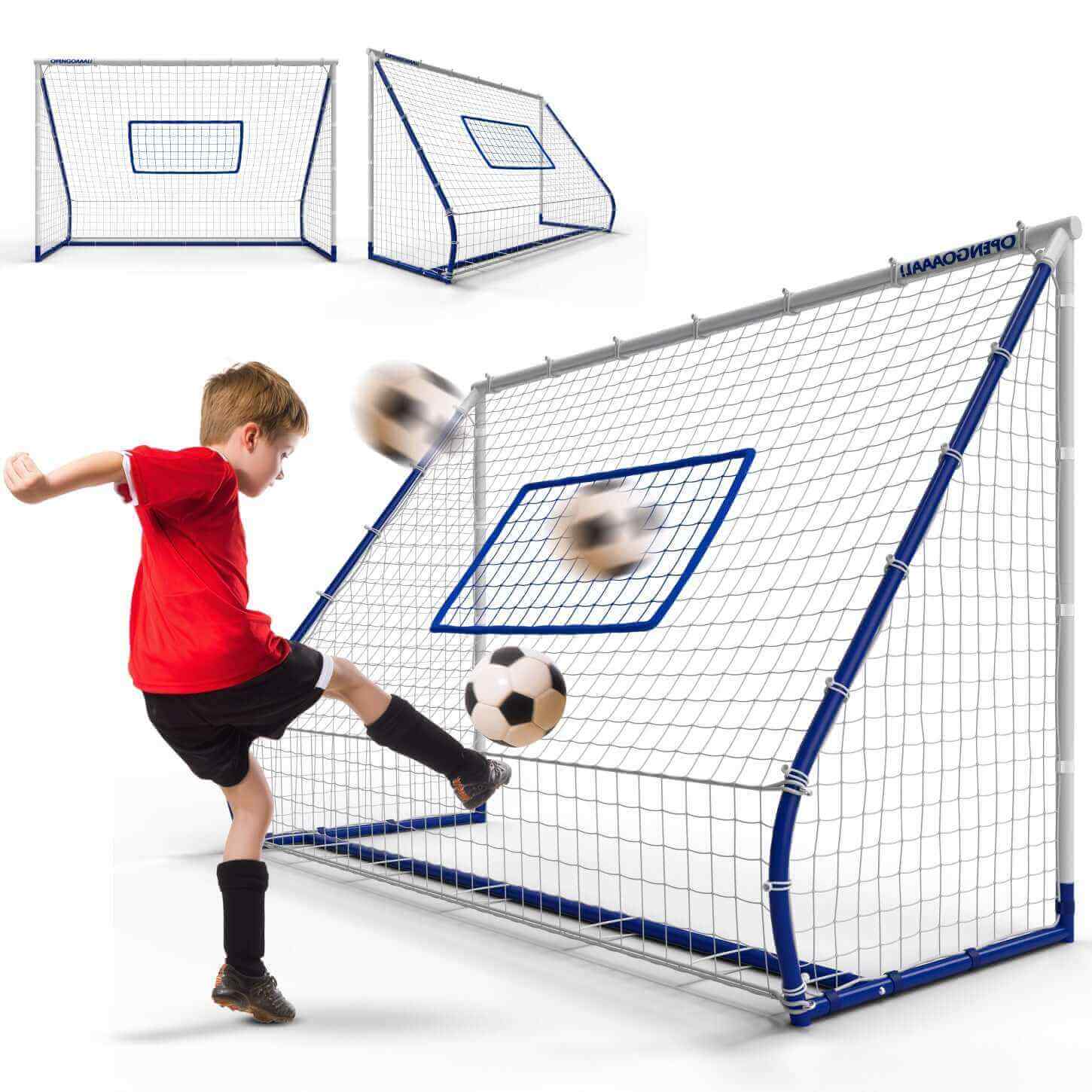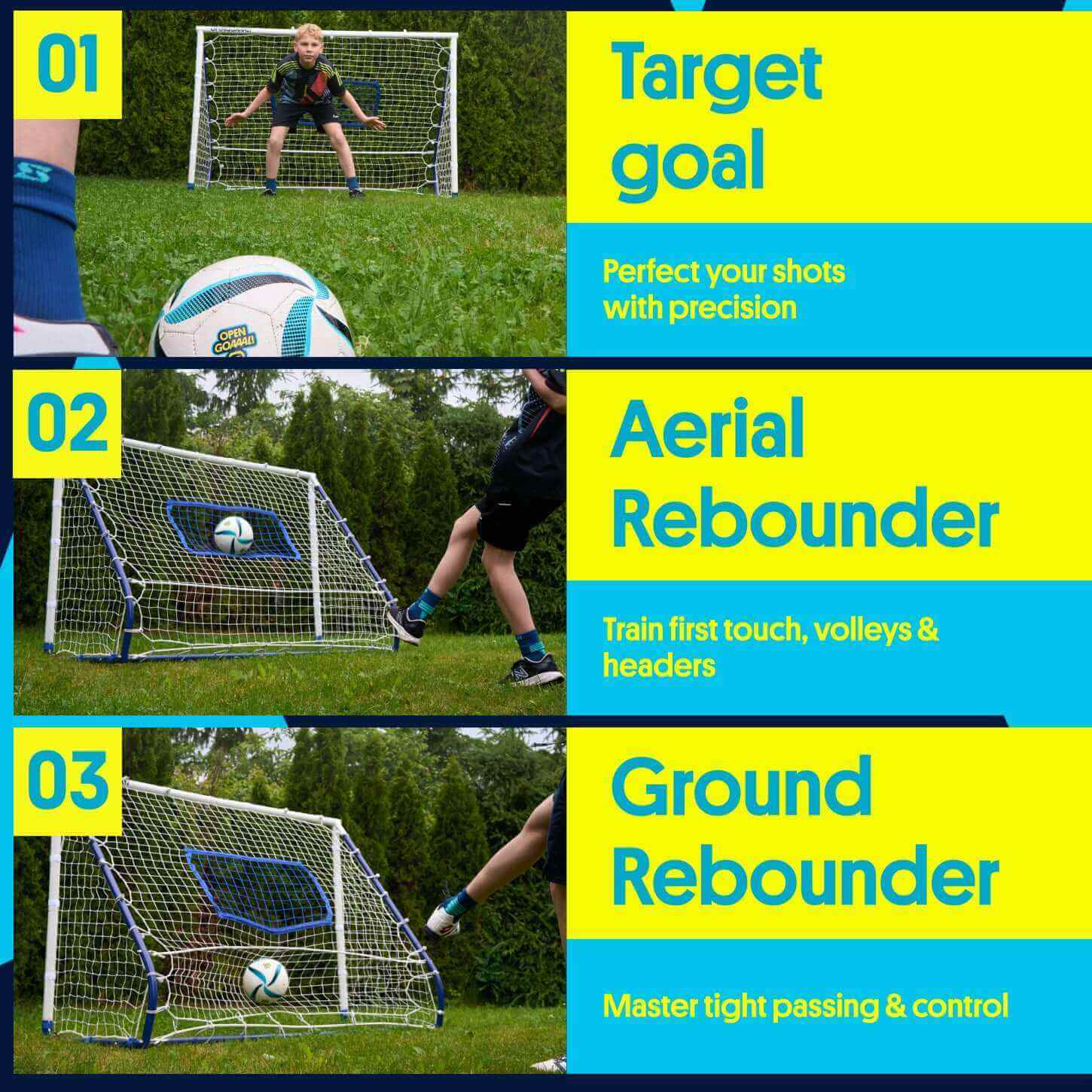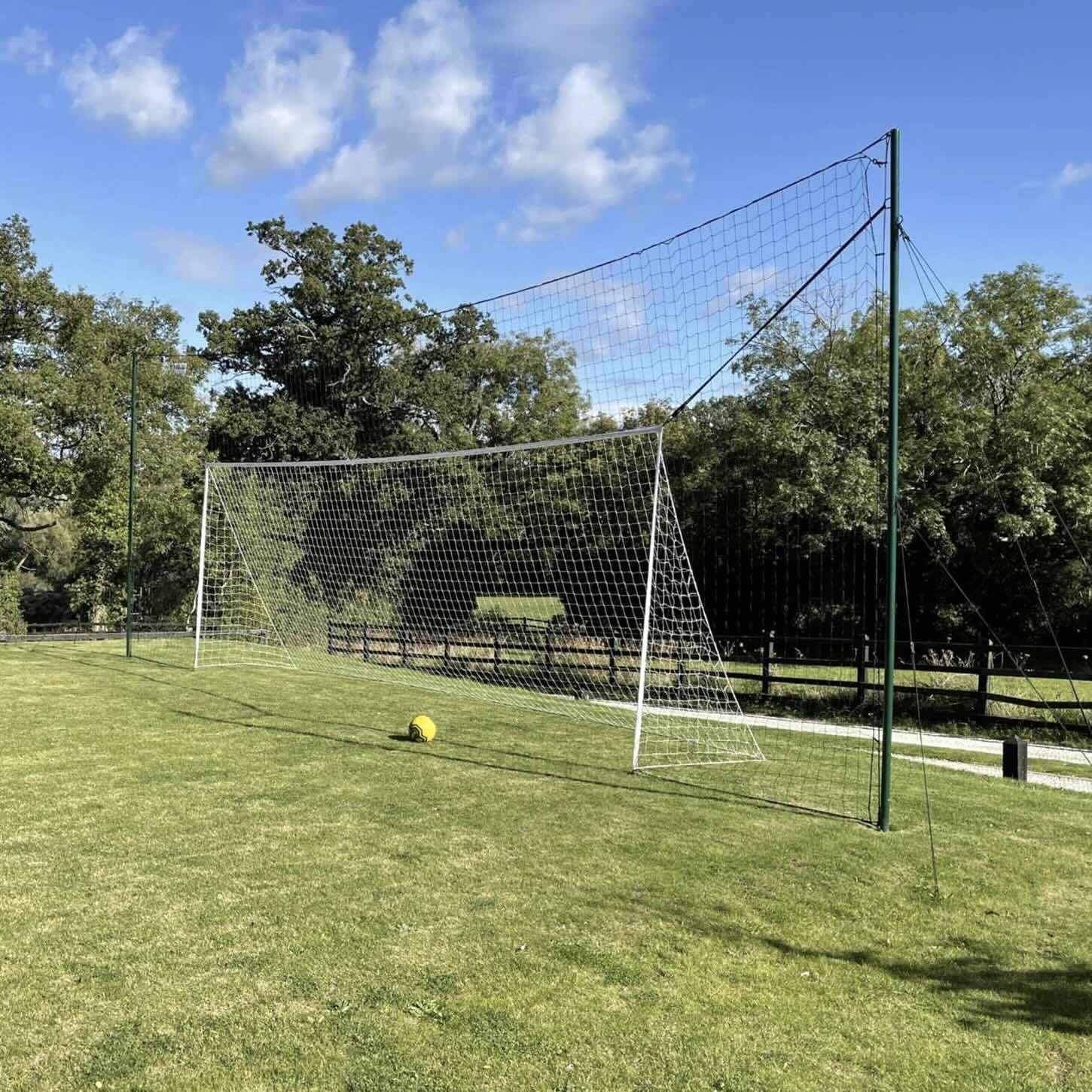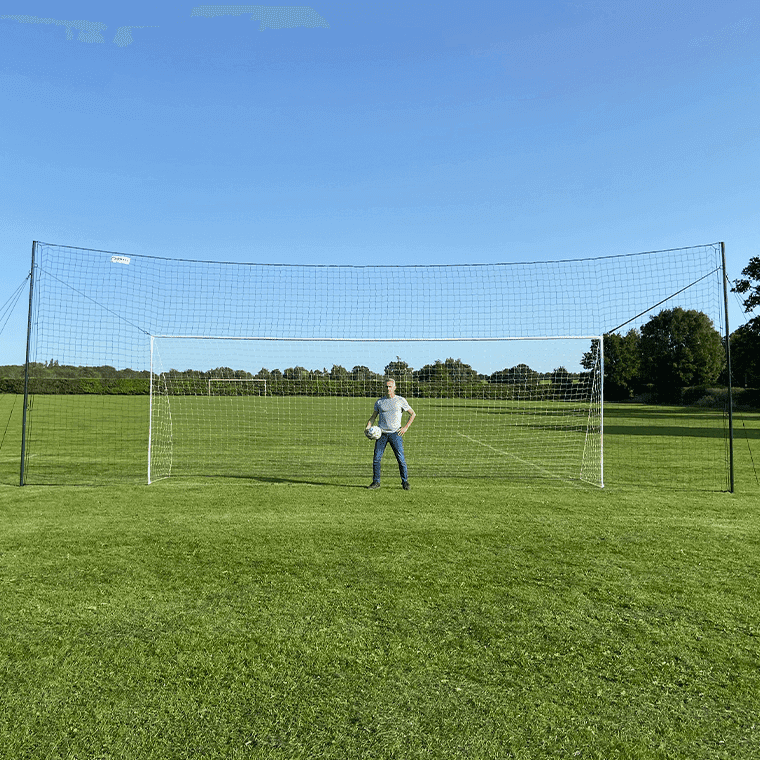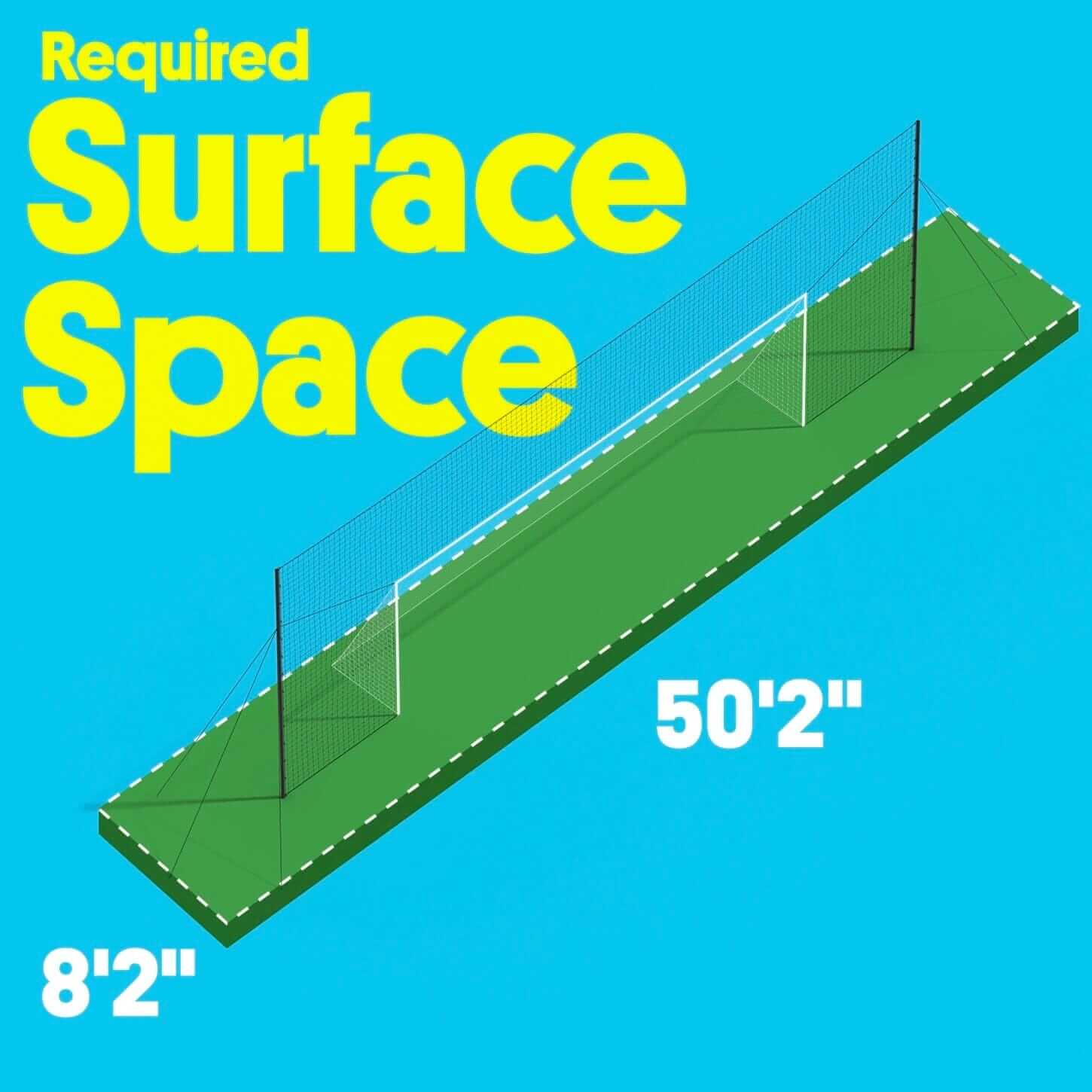Practice makes perfect, they say. However, it can be difficult to find the time to do it. If you want to cultivate players who can score past any goalkeeper, you should practice effective soccer shooting drills during your sessions.
Soccer shooting drills are not only exciting for the players, but they also teach them many of the most important skills for scoring goals. Furthermore, being a great shooter requires lots of practice. One of the most effective ways to improve your shooting ability is to practice.
Starting with stationary balls, players should graduate to moving targets, variable angle shots, and volleys. Here are some of the fun soccer drills that kids can do to improve their shooting game.
No Goals Shooting
No goals shooting is an excellent introduction for young players who have recently discovered a passion for kids' soccer.
Because younger children do not shoot as far as older ones, find an open location in the garage or set up a space for backyard soccer. This drill aims to let young players get a feel of the ball with their fee. Through this, they'll also learn how the ball moves when they hit it with a solid strike.
Kids will also learn proper kicking techniques and improve their coordination and balance through this drill. This practice does not require other soccer training equipment besides a soccer ball and a good pair of cleats.
Open Goal Shooting
Open goal shooting is a fun drill that even adults and teenagers use to improve their talents.
This drill is quite similar to the previous one, except that there is a goal that restricts the shooting area and makes it more difficult. Think of it as simulating a penalty kick, except there is no goalie.
As for the soccer training equipment needed, you'll need a small or portable kids soccer goal, some cones, or even just water bottles to set the endpoints of the open goal. You can even turn this into a backyard soccer drill in the safety of your own home.
1-on-1 Shooting
The setup for one-on-one shooting is similar to the open goal drill, except that it will be more challenging.
The goal of this practice is to mimic real-life penalty shooting scenarios because now, there is an obstacle or a goalkeeper positioned to block shots.
Your kid will be forced to adjust their positioning to adapt to obstacles. This drill can improve their decision-making and strategy skills. The additional soccer training equipment you'll need is a goal, rebounder, or additional obstacles. You'll also need to act as your kid's goalie if you're playing some backyard soccer.
Rolling Ball Shooting
Because the ball does not always go to a dead stop at the player's foot, the goal for this soccer drill is to kick a rolling one.
Shooting a rolling ball is an important drill as balls are constantly rolling or airborne during games almost 90% of the time. This process is a good practice for kids to learn to reposition their kicks and keep moving while staying with the target. Training to shoot a rolling ball can also help kids be more familiar with shooting a moving ball and improve coordination.
No other soccer training equipment is needed, especially if you're playing backyard soccer — just a ball and cleats will do.
Ball Bounce Shooting
Ball bounce shooting is similar to the previous drill, except that the ball will bounce instead of rolling this time. Shooting a bouncing ball can be quite challenging, and many young players may often get frustrated, so be sure to encourage them as they go.
Shooting mid-air balls can help young players get familiar with striking an airborne ball and help improve their timing, balance, and coordination.
As with the previous drill, no additional soccer training equipment is needed to make this practice productive.
Remember To Kick With Full Power
It's an exciting feeling, isn't it? Kicking a football with all your might and sending it flying over the crossbar. It's the type of moment that most people dream about when they first start playing soccer. Now your kid can make it happen!
Kicking with the top part of the foot or the lace area will produce the best striking results, as opposed to the other foot parts that may be better for passing or intercepting.
Young soccer players should learn to experiment with different striking parts of the ball to see how the foot's position can produce different shots. The way they kick will also affect the maximum output of their kick. Here are some tips to make their bodywork for them to produce better and stronger strikes.
-
Relax the body
Allow the entire body to go limp as the whole body relaxes, including the head, shoulders, and neck. Only their ankle should have tension in preparation for taking a shot.
-
Get a good last stride
Let kids do a forward hop of sorts with their striking foot's heel as close to their back as possible. Think of it as winding up for the final kick.
-
Let the knee go first
This practice is what's commonly called 'storing the load.' Your kid's legs should form a V shape and keep it there as long as possible. Let it go into a whipping motion at the last second and let the foot connect with the ball.
-
Kick properly
Let your kids learn that they should come at the ball at a slight angle using the largest bone on their foot, which is a little bit above the big toe knuckle. This kicking method can translate to a bigger blast of energy and a stronger strike.
-
Look at the strike
If your kid can see his foot kick the ball, he's doing it right. Kicking with a straight body means that the power release was weaker than it should be.
Be Sure To Keep It Fun
Remember that while all these practices are supposed to sharpen a soccer player's abilities, these are meant to be fun soccer drills for kids. If your kid is becoming more frustrated than encouraged, then they may lose their passion for soccer. Kids usually play soccer to have fun, and it's your job as the coach to make sure that they find their love for the sport.
If you want to get your backyard soccer pitch started, check out the quality equipment you can get here.





